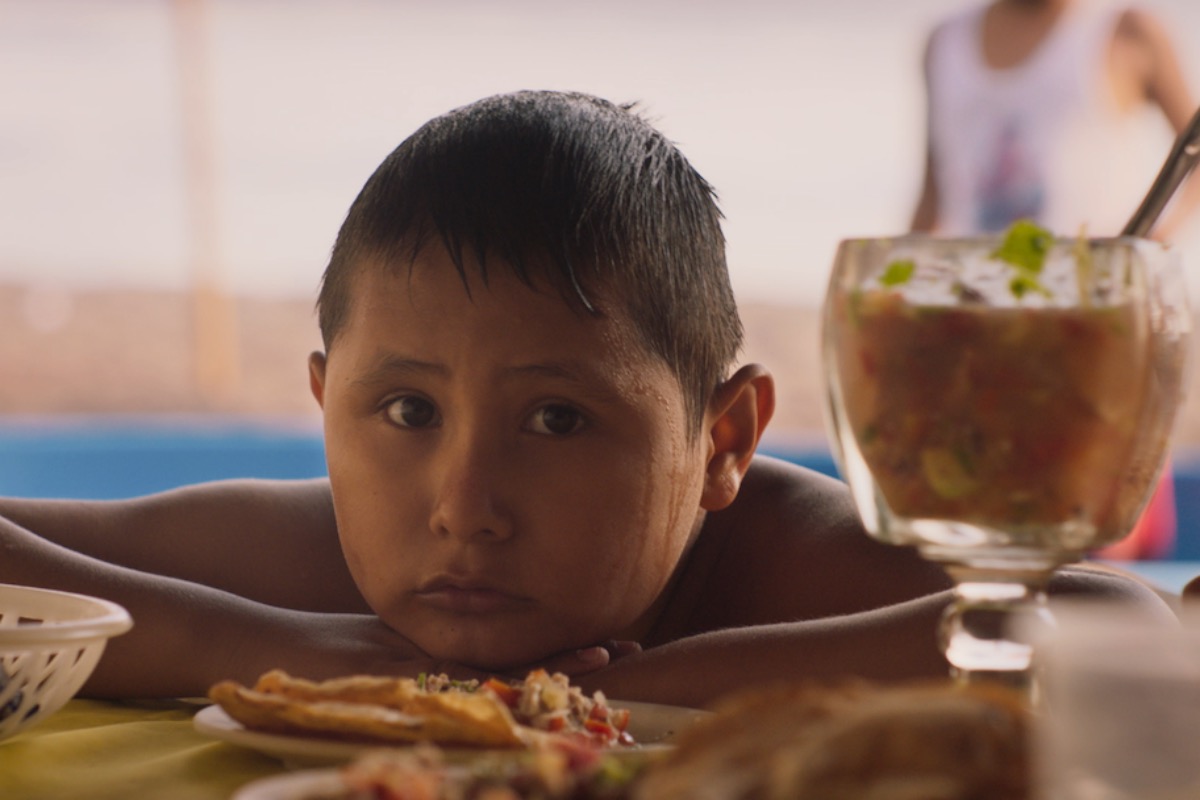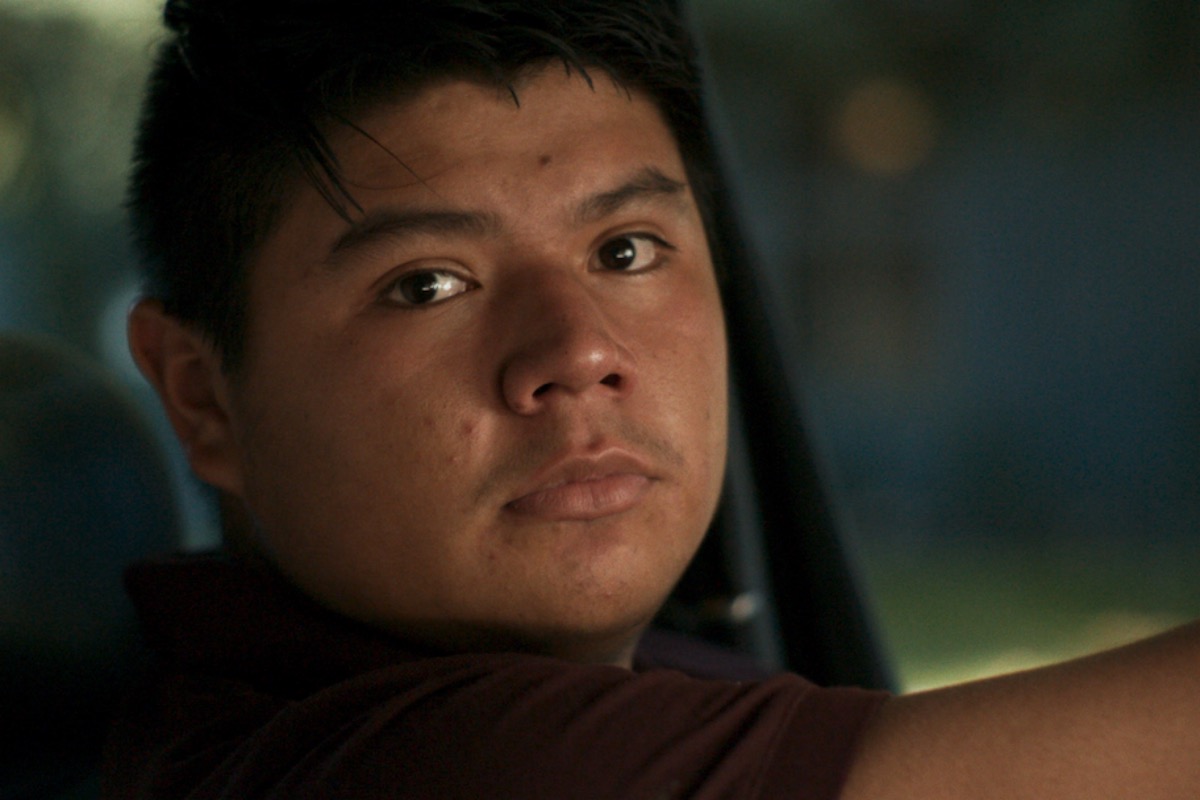

Sansón’s nephew Toñito as Sansón in ‘Sansón and Me,’ directed by Rodrigo Reyes
In 2012, documentary filmmaker Rodrigo Reyes (499) was working as a court interpreter in rural California when he met Sansón Noé Andrade, a 19-year-old from the fishing town of Tecomán in the Mexican state of Colima who was accused of murder for his role in a gang-related drive-by shooting. While it was his 15-year-old brother-in-law who pulled the trigger, Andrade was implicated for his role as the driver.
Reyes sat next to Sansón as his interpreter during the three-week trial. When Sansón was sentenced to life in prison without the possibility of parole, Reyes, struck by the outcome and with the encouragement of producer Su Kim, reached out to the young man by mail. Thus began a correspondence between the two that would produce 900 handwritten pages that serve as the basis of Reyes’ new documentary, Sansón and Me.
Unable to interview Sansón on camera because prison administrators consider it a reward for his crime, Reyes proposed, once he visited Sanson’s family in Tecomán, to recreate key moments of Sansón’s life by asking his family members to play the role of his parents and sisters. A high-school teen named Gerardo Reyes (no relation) plays Sansón in his late teen years and reads his letters in a voiceover.
Rodrigo Reyes lays his cards on the table from the very beginning, as both he and Geraldo —though we assume we are seeing Sansón on screen since he has yet to be introduced as the actor playing him— sit at an empty palacial movie theater watching a recreation of the drive-by shooting that sent Sansón to jail. Turns out that Reyes has not abandoned his role as an interpreter, except the scope of his work is no longer limited to language. This time he will use film to bring Santos’ story to life—to interpret it, if you will, for the audience.
A second level of interpretation takes place when Reyes recruits Sansón’s family for his project: Rebeca, Sansón’s sister, has been cast as their mother with her son Toñito playing the role of Sansón as a kid. Rebeca is not only reenacting events that she was a part of but also acting them out from Sansón’s perspective, as filtered through Reyes’ vision. For Toñito, it’s all a game. He takes great pleasure in being mischievous and driving Reyes insane: One scene shows Reyes running around a pool as he tried to get Toñito to get out of it and return to the set. Sansón’s uncle laments that he couldn’t be there for his nephew because he too was in jail, but is glad the movie gives him the opportunity to know more about his life.
There is a sense of excitement as Sansón’s family and the town take part in the project. They see in it not only an opportunity to tell Sansón’s story, but to remember him. Still, as Reyes and his crew grow closer to the family through acting workshops and the film’s on-and-off shooting schedule —the film took several years to complete— he comes to the realization that he may have made matters worse for Sansón’s family. He also fears that Rebeca and her son may be following the same path that Sansón and his parents traveled.
It is not until later in the documentary, after a breakdown in communications between filmmaker and subject that threatens to derail the project, that Sansón remembers life under an abusive grandmother after his father died in a traffic accident and before he was sent to an orphanage. And life seems to be looking up for him once he crosses the border to the United States: We are offered brief glimpses of his married life as he acknowledges, in Gerardo’s voice, the reasons Mexicans migrate to the North and the sense of displacement such a move eventually provokes. In his letters he also writes about how he has no choice but to join a gang due to the prison power structure and why he, in the end, has to inform on them so he can move to a better prison.


Gerardo Reyes as Sansón in ‘Sansón and Me,’ directed by Rodrigo Reyes
Reyes’ approach to Sansón’s story is almost Brechtian. Instead of drawing our sympathies, he keeps us at arm’s length from the subjects. The fusion of fact and fiction here is not as successful as it was in 499, where a 16th-century conquistador lands on the beaches of Veracruz and, by following the route taken by Cortés to Tenochtitlán, is exposed to the ravages of colonialism as he engages modern-day Mexicans from all walks of life.
Unfortunately, by adopting a performative style in Sansón and Me, Reyes not only denies his audience that potential emotional connection to Sansón’s story, but ends up stressing the me in the title, too. For example, when he criticizes Sansón’s decision in his letters, his tone is rather judgmental, a failed attempt at sounding impartial and objective. He goes on and on about how Sansón’s story has affected him personally as a migrant.
You can’t avoid the impression that Reyes is telling the story from a position of privilege, one who had the good fortune of being able to count on a support system, including such institutions as Sundance and Tribeca, that not many immigrants are lucky to have. Meanwhile, Sansón remains in prison, a victim of fate, circumstance, and poverty’s vicious circle, whatever promise he had as a citizen curtailed by a simple act of goodwill.
Sansón and Me may have started with the best of intentions, and there is no doubt that it strengthened Reyes’ bond and friendship with Sansón. But in the end, his authorial voice overpowers the film and undermines his well-meaning designs.
***
Alejandro A. Riera is a film critic and the media coordinator for several music and film festivals in Chicago where he lives. He has been writing about film and television since 1993, when he joined the team of ¡Exito!, the Chicago Tribune’s Spanish-language weekly. He is a member and treasurer of the Chicago Film Critics Association and a rabid defender of Latin American cinema. Twitter: @AlejandroARiera


